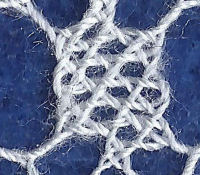
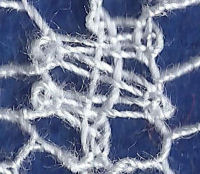
The outer pairs join the hexagon, then immediately leave it.
There are no pinholes at the edge in the middle.
The cloth hexagon is very sparse, with only one passive pair in the middle. The half stitch hexagon is better.



The outer pairs join the hexagon, then immediately leave it.
There are extra pinholes at the edge in the middle.
The cloth hexagon is better, but there are a couple of holes visible. The half stitch hexagon looks weird!

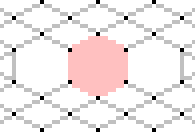
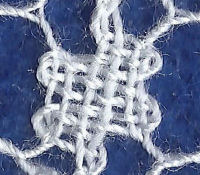
The outer pairs join the hexagon and stay there, leaving a gap outside the hexagon at the edge.
There are no pinholes at the edge in the middle.
Both cloth and half stitch hexagons look fine.

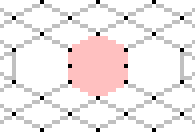
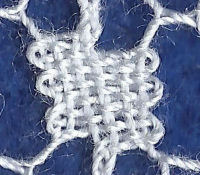
The outer pairs join the hexagon and stay there, leaving a gap outside the hexagon at the edge.
There are extra pinholes at the edge in the middle.
Good solid cloth and half stitch hexagons.
